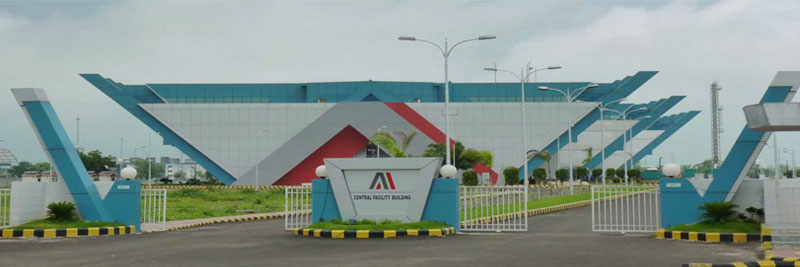The Multi-modal International Cargo Hub and Airport at Nagpur (MIHAN) is emerging as one of India’s most ambitious and transformative infrastructure initiatives. Strategically located at the geographical center of the country, MIHAN is designed to harness Nagpur’s central position to develop it into a key hub for logistics, cargo, aviation, and industrial activity.
An Integrated Vision for Growth
Spearheaded by the Maharashtra Airport Development Company (MADC), MIHAN is a multi-dimensional project that integrates air, rail, and road connectivity with industrial and urban development. It includes the expansion of Dr. Babasaheb Ambedkar International Airport, the establishment of India’s largest multi-product Special Economic Zone (SEZ), and the development of essential support infrastructure.
The project, with an estimated investment of ₹2,581 crore, is anticipated to generate more than ₹5,000 crore in revenue by 2035, making it one of the largest economic development ventures in the country.
Airport Expansion to Support Global Trade
Central to the MIHAN project is the major expansion of Nagpur’s international airport. The airport is being developed over 1,364 hectares, with key features including:
- A 3,600-meter runway, with plans to extend it to 4,000 meters to accommodate wide-body aircraft.
- Parking facilities for up to 100 aircraft.
- A sprawling passenger and cargo terminal covering 3 million sq. ft., capable of handling 14 million passengers and 870,000 tonnes of cargo annually.
These enhancements aim to establish Nagpur as a leading air cargo hub, improving efficiency and reducing congestion in existing metro airports.
Special Economic Zone (SEZ): A Magnet for Industry
The MIHAN SEZ spans over 2,000 hectares and is designed to foster a broad range of industries and services. It includes:
- IT Parks for technology companies.
- A dedicated Health City offering medical services, hospitals, and training institutions.
- Space for manufacturing units in pharmaceuticals, textiles, and food processing.
- Residential areas to support the growing workforce and promote integrated urban living.
The SEZ offers multiple incentives such as tax benefits, duty-free imports, and simplified procedures to attract both domestic and foreign investments.
Seamless Multi-modal Connectivity
One of MIHAN’s core strengths lies in its intermodal transportation network, which ensures seamless movement of goods and people:
- Road infrastructure connects MIHAN to National Highways for regional and national access.
- A dedicated railway terminal within the project area facilitates the movement of cargo by rail.
- Direct air links to major Indian and international cities further strengthen its role as a logistics hub.
This robust infrastructure makes MIHAN an ideal location for companies seeking efficient supply chain and distribution networks.
Driving Regional Development
Beyond its industrial and logistical advantages, MIHAN is poised to be a major driver of economic and social development in the Vidarbha region:
- It is expected to generate thousands of jobs, both directly and indirectly.
- Real estate development is accelerating to meet the demands of a growing workforce and business community.
- The project supports environmentally sustainable practices, including green cover initiatives and pollution control.
By bridging regional imbalances and attracting global investment, MIHAN is playing a key role in Maharashtra’s broader vision for balanced economic growth.
A Strategic Asset for India’s Future
As India continues to expand its role in global trade and manufacturing, MIHAN is well-positioned to serve as a strategic logistics and industrial hub. With continued investments and development, it is set to contribute significantly to national economic progress, employment generation, and infrastructure modernization.
Frequently Asked Questions (FAQs) on the Multi-modal International Cargo Hub and Airport at Nagpur (MIHAN):
What is MIHAN?
MIHAN is a large-scale infrastructure project aimed at creating a logistics and aviation hub in Nagpur, Maharashtra. It includes an international airport, a Special Economic Zone (SEZ), and supporting infrastructure for multi-modal transport (air, rail, and road).
Why was Nagpur chosen for MIHAN?
Nagpur lies at the geographical center of India, making it ideal for national cargo distribution. Its Zero Mile location ensures excellent connectivity by rail, road, and air, minimizing transport time and cost across the country.
What are the main components of the MIHAN project?
International Airport Expansion: The Dr. Babasaheb Ambedkar International Airport is being expanded for greater passenger and cargo capacity.
Special Economic Zone (SEZ): Includes IT parks, manufacturing units, and a Health City.
Residential & Commercial Zones: Developed to support workforce housing and business needs.
Multi-modal Transport Integration: Combining air, rail, and road logistics.
Who is developing MIHAN?
MIHAN is developed by the Maharashtra Airport Development Company Limited (MADC), a government entity. MADC coordinates with the Airports Authority of India and private partners to manage the project.
What is the estimated cost of MIHAN?
The total cost is projected at ₹2,581 crore, with phased development extending up to 2035.
How does MIHAN support cargo movement?
MIHAN provides multi-modal connectivity:
Air: Expanded airport with cargo terminals.
Rail: A dedicated terminal connects to India’s rail network.
Road: Located near national highways for efficient truck transport.
Which industries operate in the MIHAN SEZ?
Industries include:
Information Technology: TCS, Infosys, HCL
Manufacturing: Textiles, pharmaceuticals, engineering goods
Healthcare: Institutions like AIIMS Nagpur and the National Cancer Institute
How many jobs has MIHAN created?
MIHAN has generated over 30,000 direct and indirect jobs, with the number expected to grow significantly as more industries establish operations in the zone.
What are the environmental measures taken in MIHAN?
Over 500,000 trees planted for green cover
Pollution control regulations in the SEZ
Water treatment and recycling infrastructure to manage resources sustainably



